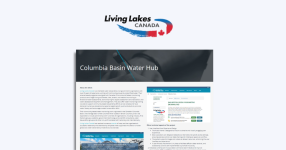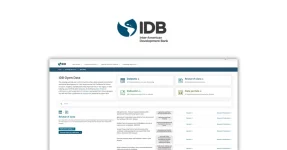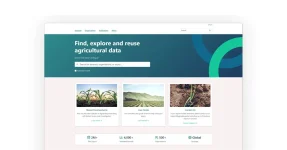As one speaker from a Dutch university noted, ‘Sometimes the hardest part isn't building the technology but getting all the stakeholders to agree on what we're building in the first place.’
I just wrapped up an illuminating few days at the 19th International Digital Curation Conference (IDCC25) in The Hague. The event’s theme, ‘Twenty years back, twenty years forward: lessons and directions in digital curation’, couldn’t have been more timely as the digital curation community reflects on two decades of progress while confronting emerging challenges related to AI, data quality, and changing demographics.
This year’s conference was impressive by the numbers: 237 in-person attendees, plus 51 online participants, representing 50 countries across four continents.
Key observations
The most interesting session for me was Martha Whitehead and Stuart Snydman‘s presentation from Harvard University, titled, ‘From Building a First-Generation Digital Library Infrastructure to Reimagining Discovery.’ They focused on how digital infrastructure had developed over time at Harvard, evolving from the Library Digital Initiative in 1998 to today’s AI-enhanced discovery tools.
What resonated most was their straightforward assessment of how the rapid increase and fragmentation of digital tools have created challenges for users. As Stuart put it: ‘We’ve accumulated an ecosystem of often bespoke, siloed, and specialized platforms that can at times feel overwhelming to the point of being counterproductive.’ This mirrors challenges I’ve seen across many organizations; as we use more tools to solve problems, we sometimes create new ones.
Their demonstration of an AI-powered Collections Explorer prototype showed how semantic search might transform the way researchers discover resources. Instead of just matching keywords, their system understands context and relationships between concepts, finding relevant materials even when specific search terms don’t appear in the metadata.
Another standout was the presentation, ‘Managing Datasets in Their Afterlife’ by Renata Curty from University of California, Santa Barbara. She tackled the often-overlooked topic of dataset retractions and how repositories handle compromised data. Her research found inconsistent approaches across platforms, highlighting the need for standardized practices in flagging and preserving retracted datasets rather than simply deleting them.
Stay updated with Link Digital
Personal Impressions
Community feel
What I appreciated most about IDCC25 was its community feel. Despite growing to over 280 attendees, it has maintained an accessible atmosphere in which experienced professionals and newcomers could connect meaningfully. The conference’s hybrid format worked remarkably well for remote participants, like me, with dedicated online sessions in which it was possible to ask questions online and get real-time replies. It was possible to ask questions online and get real-time replies.
Similar challenges
I was impressed by how many institutions are tackling similar challenges with different approaches. Nearly every major university and research center seems to be wrestling with the same fundamental issues: fragmented infrastructure, limited user adoption, sustainable funding models, and the growing complexity of research data. Yet the different solutions they apply are influenced by unique priorities and constraints.
The Belgium-based university KU Leuven‘s presentation on their integrated lifecycle of research data management tools was particularly interesting. They’ve created seamless connections between their data management planning tools, active data management system, and repository systems. What struck me was their pragmatic approach. Rather than building one monolithic system, they focused on creating strong connections between specialized tools.
In contrast, Harvard has invested heavily in AI-powered discovery layers to help users navigate their ecosystem of tools, addressing the symptom rather than restructuring their underlying systems.
The funding models also varied dramatically. While KU Leuven built their infrastructure with significant government co-financing, on the understanding they’d eventually need to demonstrate value or find alternative funding, other institutions like UC Santa Barbara appeared to take a more step-by-step approach based on available grants and institutional priorities.
This creates very different sustainability challenges. The Belgian approach offers a more comprehensive initial buildout but faces a potential funding cutout. While this approach may be more sustainable it can create integration headaches.
Another observation I would make is that institutions with strong central IT governance seemed to make faster progress than those with more distributed decision-making. As one speaker from a Dutch university noted, ‘Sometimes the hardest part isn’t building the technology but getting all the stakeholders to agree on what we’re building in the first place.’
Still tackling fundamentals
The conference reinforced that while there’s been solid progress in digital curation over two decades, we’re still grappling with fundamental challenges around sustainability, interoperability, and user experience. ‘We’ve solved many technical problems but still struggle with the human ones,’ one presenter noted.
As I think through how to apply these insights at Link Digital, I’m especially focused on how we can better integrate our tools while keeping user needs central to our design process. IDCC25 was an informative, timely reminder that behind every data point and digital asset are people trying to discover, understand, and build knowledge.



